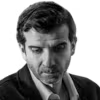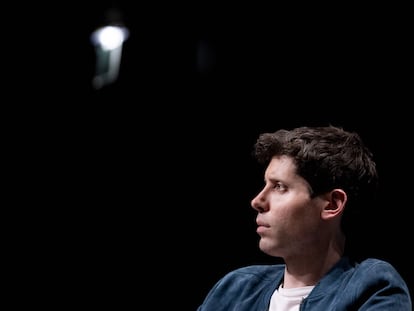The first steps of AI in the arts: Fads, scams and high hopes
New tech tools and algorithms raise ethical questions about the future of art ownership

Since the introduction of oil painting, there had never been a similar revolution in art. Today, however, there’s a new debate, divided between the appearance of a new type of artistic expression and those who consider it to be a failed idea.
Artificial intelligence (AI) has torn into creation. While art and technology have been related for 50 years, this has always been a marginal discourse. Perhaps the South Korean artist Nam June Paik (1932-2006) was the biggest pioneer of this — he is considered to be the founder of video art. Amid all the eccentricities of artists experimenting with technology, AI has continued to advance.
The Museum of Modern Art in New York City added 14 video games to its collection last year, from Super Mario Bros (1985) to Minecraft (2011). Walking into the past, the Los Angeles County Museum of Art has unveiled an exhibition titled Coded, which reveals how computers went from calculating missile trajectories to being used in artistic creation. The Guggenheim Museum has also keyed into this phenomenon, hiring Noam Segal — an expert on the mixture of creation and technology — to be a curator.
This new museum circuit is no coincidence: art created by AI is going through an immensely hopeful period. Canadian artist Jon Rafman — whose work centers around the existential impact of technology on daily life — has displayed some massive paintings (all generated by algorithms) at the Sprüth Magers gallery in London. He has utilized machine learning technology in this creative process: the higher the quality of the data supplied to the algorithm, the better the aesthetic product.
When the contemporary Spanish artist Daniel Canogar is asked if he thinks that this formula will have reach in the future, he makes a prediction: “I don’t know about the market, but the creative spirit of the human being will devour this technology and make it his own, through complex, ironic and subtle works.”
The British art collector Damien Hirst — whose work belongs more and more to business school textbooks and less to the field of art history — knows how to make money. His recent AI-generated project — The Beautiful Paintings — has already brought him over $20 million in just nine days, after he sold 5,508 paintings in the first weeks of April. These were released in physical and digital formats (as an NFT, similar to a JPG image). Hirst has also used AI to revise his 1992 series, Spin Paintings. Back then, the British citizen had resorted to a classic technique borrowed from amusement parks: the experience in which boys pour paint on a spinning sheet, obtaining colorful spirals. He’s now made millions more from a simple concept, which has been varnished with technology.
AI-generated art presents problems that are as extensive as its possibilities of fraud. German artist Boris Eldagsen recently turned down a 2023 Sony World Photography Award because he used AI in the work he was being honored for. He freely admitted this: his goal was to warn of the dangerous limits between manipulation and photography. In our society, it is institutions that validate the dream — or the lie — of art. Mexico’s Rafael Lozano-Hemmer — one of the great artists at work in the fusion of artistic creation and technology — has no doubts about this new form of art. “It will enter museums, just like painting or performance. There’s no human discipline beyond AI, because it’s part of us… even if we have to avoid it.”
These AI programs are trained with images. The higher quality they are, the better the results. And, at this stage of the process, the lawyers make an appearance. A key question arises: who owns the rights? Getty Images has sued the AI generator Stable Diffusion in the US and UK for $2 billion in damages, after the technology company used millions of its photos to train algorithms. Meanwhile, the British painter David Hockney ironically declared that the best acronym for NFTs would be “international thieves and fraudsters.”
With all of this rejection of the art form, there are a lot of clouds ahead. But there also appears to be a commitment to AI-generated art. For instance, the Detroit-based Knight Foundation — an American non-profit — has announced $23 million in funding for digital creation. They profess hope about this new trend: “AI pushes us to reimagine the way in which all sectors of society live and will have its impact on art,” predicts Victoria Rogers, the artistic vice president of the foundation.
There’s something dystopian when machines can appropriate any existing art style. Something disturbing.
Sign up for our weekly newsletter to get more English-language news coverage from EL PAÍS USA Edition
Tu suscripción se está usando en otro dispositivo
¿Quieres añadir otro usuario a tu suscripción?
Si continúas leyendo en este dispositivo, no se podrá leer en el otro.
FlechaTu suscripción se está usando en otro dispositivo y solo puedes acceder a EL PAÍS desde un dispositivo a la vez.
Si quieres compartir tu cuenta, cambia tu suscripción a la modalidad Premium, así podrás añadir otro usuario. Cada uno accederá con su propia cuenta de email, lo que os permitirá personalizar vuestra experiencia en EL PAÍS.
¿Tienes una suscripción de empresa? Accede aquí para contratar más cuentas.
En el caso de no saber quién está usando tu cuenta, te recomendamos cambiar tu contraseña aquí.
Si decides continuar compartiendo tu cuenta, este mensaje se mostrará en tu dispositivo y en el de la otra persona que está usando tu cuenta de forma indefinida, afectando a tu experiencia de lectura. Puedes consultar aquí los términos y condiciones de la suscripción digital.
More information
Archived In
Últimas noticias
Iranian women are also defying the taboo of riding motorcycles (and without a license)
David Bowie, the galactic thinker who encouraged us to break new ground
John Berger and the loss of rural culture
From police officer to bloodthirsty kidnapper: Terror in Mexico during the years of ‘The Ear Chopper’
Most viewed
- David King, chemist: ‘There are scientists studying how to cool the planet; nobody should stop these experiments from happening’
- Reinhard Genzel, Nobel laureate in physics: ‘One-minute videos will never give you the truth’
- Oona Chaplin: ‘I told James Cameron that I was living in a treehouse and starting a permaculture project with a friend’
- Mexico completes its trade shift with the entry into force of tariffs on China and countries without trade agreements
- Sinaloa Cartel war is taking its toll on Los Chapitos











































